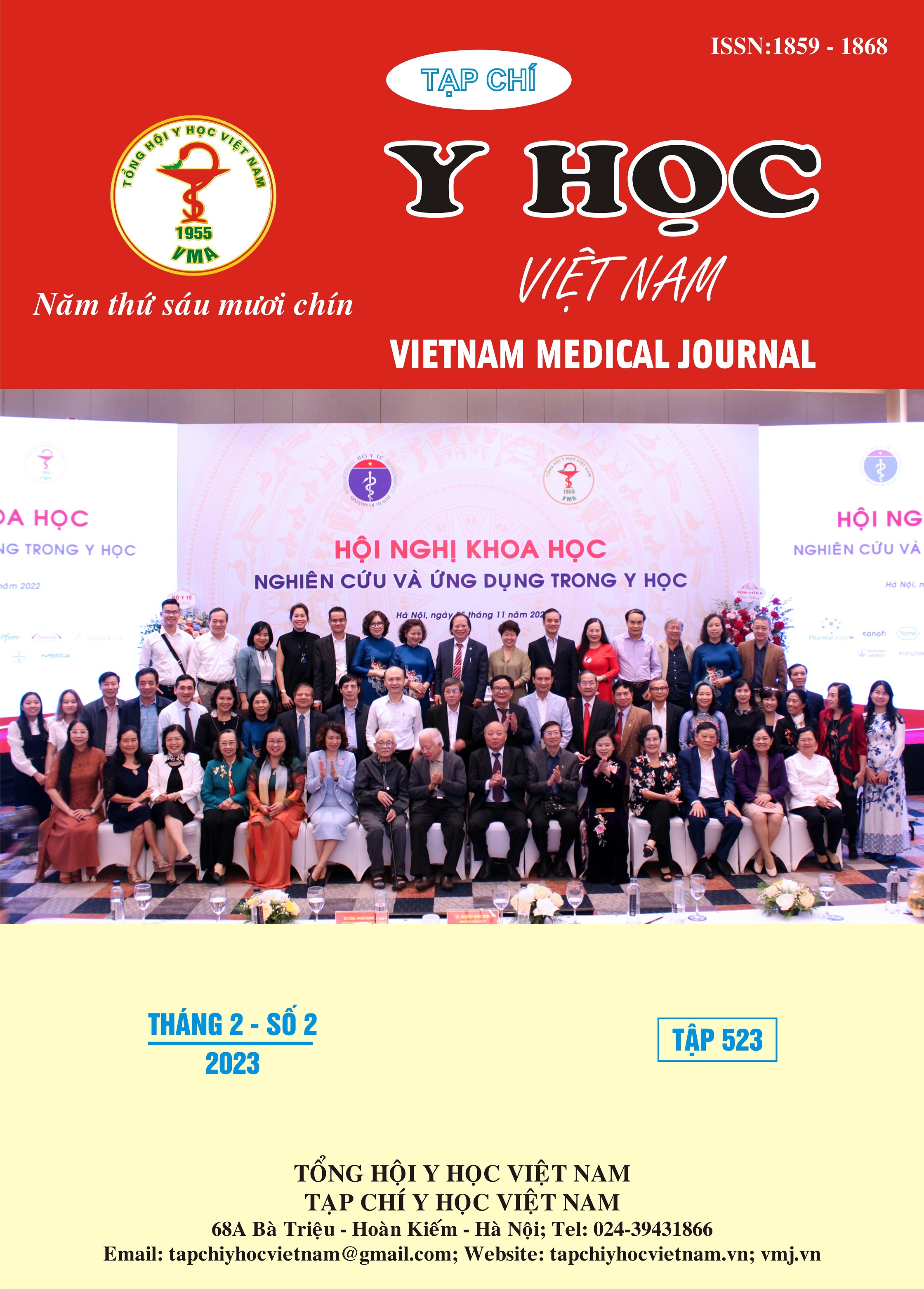CLINICAL AND SUBCLINICAL CHARACTERISTICS OF PATIENTS WITH VENTILATOR-ASSOCIATED PNEUMONIA TREATED AT HANOI MEDICAL UNIVERSITY HOSPITAL
Main Article Content
Abstract
Ventilator-associated pneumonia (VAP) is the most common nosocomial infection and the leading cause of death in intensive care units. Studying clinical and subclinical characteristics of patients with VAP makes an important contribution to early detection, selection of appropriate initial antibiotic treatment, and reduction of complications and mortality for patients. A cross-sectional descriptive study was conducted to describe the clinical and subclinical characteristics of patients with VAP treated at Hanoi Medical University Hospital. 162 patients were selected for the study. Information was collected from medical records or family members according to the medical record form of the research. The results showed that the average age of the patients in the study was 65.8±17.2 years old. The average time of occurrence of VAP is 5.5±2.4 days, late VAP accounted for 58.0%. Clinical symptoms when the VAP occured were fever ≥ 380C (75.3%), pulmonary rales (88.9%), increased secretion of sputum/cloudy sputum (95.1%). Subclinical symptoms when VAP appeared were leukocytosis over 12x109/L (79.0%), Pro-calcitonin increased over 0.5ng/mL (89.5%) and X-ray image of diffuse infiltrative lung (42.6%) and pulmonary coagulation (31.5%).
Article Details
Keywords
Ventilator-associated pneumonia, nosocomial infection, clinical, subclinical
References
2. Melsen WG, Rovers MM, Groenwold RH, et al. Attributable mortality of ventilator-associated pneumonia: a meta-analysis of individual patient data from randomised prevention studies. The Lancet Infectious diseases. 2013;13(8):665-671.
3. Wang Y, Eldridge N, Metersky ML, et al. National trends in patient safety for four common conditions, 2005-2011. The New England journal of medicine. 2014;370(4):341-351.
4. Hoàng Khánh Linh. Nghiên cứu đặc điểm viêm phổi liên quan thở máy tại khoa hồi sức tích cực bệnh viện Bạch Mai giai đoạn 2017-2018: Luận văn Bác sĩ chuyên khoa cấp II, Trường Đại học Y Hà Nội; 2018.
5. Trịnh Thị Hoàng Anh. Đánh giá vi khuẩn và tình trạng kháng kháng sinh của các loại vi khuẩn gây viêm phổi liên quan đến thở máy tại đơn vị Hồi sức ngoại bệnh viện Bạch Mai năm 2020: Luận văn thạc sĩ y học Trường Đại học Y Hà Nội; 2020.
6. But A, Yetkin MA, Kanyilmaz D, et al. Analysis of epidemiology and risk factors for mortality in ventilator-associated pneumonia attacks in intensive care unit patients. Turkish journal of medical sciences. 2017;47(3):812-816.
7. Chang L, Dong Y, Zhou P. Investigation on Risk Factors of Ventilator-Associated Pneumonia in Acute Cerebral Hemorrhage Patients in Intensive Care Unit. Canadian respiratory journal. 2017;2017:7272080.
8. Liu Y, Di Y, Fu S. Risk factors for ventilator-associated pneumonia among patients undergoing major oncological surgery for head and neck cancer. Frontiers of medicine. 2017;11(2):239-246.
9. Trần Thị Mộng Lành và Hoàng Tiến Mỹ. Khảo sát sự đề kháng kháng sinh của vị khuẩn gây viêm phổi trên bệnh nhân thở máy tại bệnh viện đa khoa Kiên Giang. Tạp chí Y học thành phố Hồ Chí Minh. 2019;1(Phụ bản tập 23):75-81.


